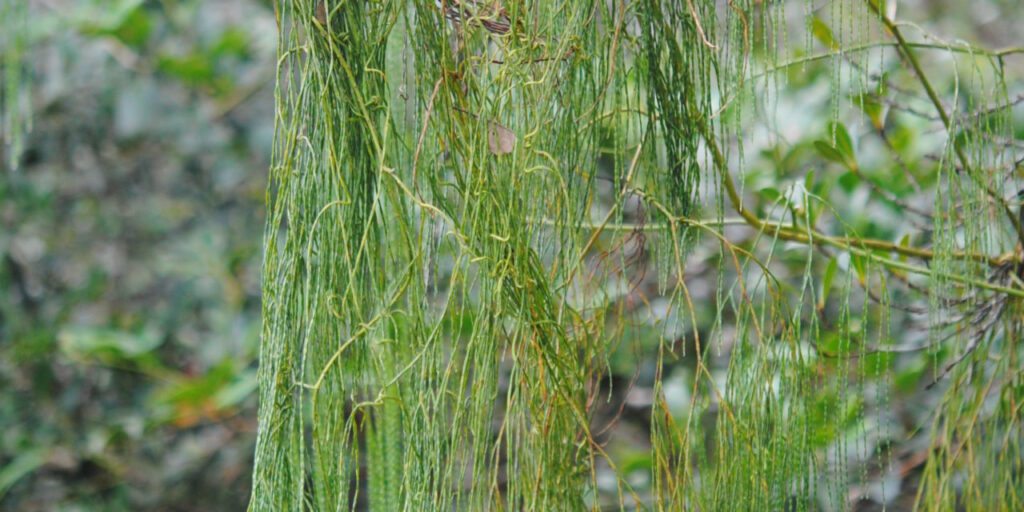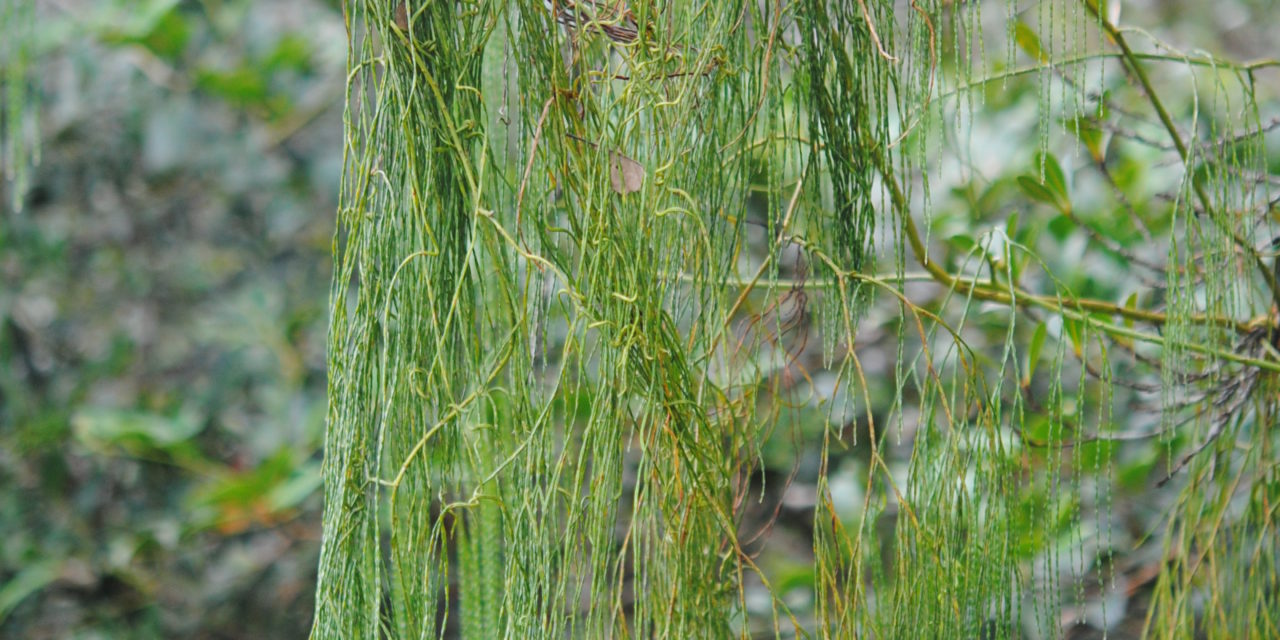Tyrosinase is a crucial multifunctional enzyme that catalyzes the oxidation of phenolic compounds, playing a significant physiological role in humans. Imbalances or dysregulated expression of this enzyme can lead to various skin disorders, including melanoma, freckles, chloasma, and vitiligo. Given its central role in melanogenesis, the process responsible for pigment production, tyrosinase inhibitors are considered highly promising for use in both cosmetic and medicinal products aimed at skin tone enhancement and depigmentation. Consequently, the search for effective and safe natural tyrosinase inhibitors from diverse sources, particularly plants, has become a prominent research area.
Lycopodiastrum casuarinoides, an evergreen fern native to tropical and subtropical regions of Asia, has been traditionally used in Chinese medicine for centuries. Previous phytochemical investigations of L. casuarinoides have revealed a variety of chemical constituents, such as alkaloids, terpenes, and lipids, which exhibit a broad spectrum of pharmacological activities, including cholinesterase inhibitory, anti-inflammatory, and neuroprotective effects. However, prior to this study, the tyrosinase inhibitory potential of L. casuarinoides had not been explored. Therefore, this research aimed to investigate the phytochemical composition of L. casuarinoides through bioassay-guided isolation and to evaluate their inhibitory activity against mushroom tyrosinase, which has high similarity and homology with human tyrosinase.
Methods
The study initiated with the bioassay-guided isolation of chemical constituents from the air-dried aboveground parts of Lycopodiastrum casuarinoides. Following extraction with 90% ethanol, the extracts were successively partitioned with petroleum ether and chloroform. The chloroform extract, identified as having potent mushroom tyrosinase inhibitory effects, was subjected to extensive purification using silica gel and Sephadex LH-20 column chromatography, yielding ten distinct compounds (1–10). The chemical structures of these isolated compounds were rigorously confirmed through 1H and 13C Nuclear Magnetic Resonance (NMR) and Mass Spectrometry (MS) spectral data, along with comparisons to existing literature. The in vitro mushroom tyrosinase inhibitory activity of the isolates was then assessed by monitoring absorbance at 475 nm, and inhibitory concentration 50% (IC50) values were calculated, using kojic acid as a positive control. Finally, molecular docking simulations were conducted to elucidate the binding mechanisms between promising compounds and mushroom tyrosinase (PDB ID: 2Y9X).
Key Findings
• Isolation of Chemical Constituents: Ten chemical constituents (compounds 1–10) were successfully isolated from the aboveground parts of L. casuarinoides. These compounds represented diverse structural skeletons, including two triterpenes (α-onocerin and 26-nor-8-oxo-α-onocerin), one steroid (β-sitosterol), three flavonoids (eriodictyol-7,3′-dimethyl ether, 4′,5-dihydroxy-3′,7-dimethoxyflavone, and 2-[2-(4-methoxyphenyl)ethyl]chromone), and four benzene derivatives (terephthalic acid bis (2-ethyl-hexyl) ester, ethyl ferulate, ethylparaben, and 4-hydroxybenzaldehyde).
• Novelty of Isolation: Notably, compounds 3–9 were isolated from the genus Lycopodiastrum for the first time, highlighting new chemical discoveries from this plant.
• Mushroom Tyrosinase Inhibitory Activity: Among the isolated compounds, compounds 6 (2-[2-(4-methoxyphenyl)ethyl]chromone) and 7 (terephthalic acid bis (2-ethyl-hexyl) ester) exhibited promising moderate mushroom tyrosinase inhibitory effects.
• Inhibitory Potency: The IC50 values for compounds 6 and 7 were determined to be 1.90 mM and 2.43 mM, respectively. While these values indicate moderate activity and were less potent than the positive control kojic acid (IC50 = 0.17 mM), they fall within acceptable ranges for potential inhibitors. Compound 3, β-sitosterol, had also previously shown potent mushroom tyrosinase inhibitory activity (IC50 = 35.5 µM).
• Molecular Binding Mechanism: In silico molecular docking experiments confirmed good binding affinity of compounds 6 and 7 to mushroom tyrosinase. Compound 6 had a binding energy score of −6.60 kcal/mol, and compound 7 had a score of −5.75 kcal/mol, comparable to the native ligand tropolone (−6.07 kcal/mol).
• Key Amino Acid Interactions: For compound 6, interactions primarily involved hydrogen bonds with Lys180 and π–involving interactions with Lys180, His178, and Glu173. Compound 7 formed hydrogen bonds with Gln41 and Lys180, and alkyl-involving interactions with His182, His178, Lys180, Ala45, and Lys158, all located within the active site of mushroom tyrosinase.
The findings strongly suggest the utilization of L. casuarinoides as a promising source for developing anti-hyperpigmentation formulations. Despite these advancements, the study acknowledges certain limitations that point to future directions. Primarily, the bioassays were conducted using mushroom tyrosinase, and while highly homologous to human tyrosinase, future inhibitory experiments with human tyrosinase are recommended for direct relevance to human applications. Additionally, given the moderate inhibitory activity of compounds 6 and 7, further work is needed to modify or derivatize these compounds to enhance their potency. Comprehensive pharmacological profiling, including general cytotoxicity, absorption, distribution, metabolism, and excretion (ADME), as well as investigations into solubility, permeability, and formulation feasibility for cosmetic products, are crucial next steps for translating these findings into practical applications. This research lays a solid foundation for continued exploration of L. casuarinoides in the development of novel cosmetic and medicinal products.
Link to the study: https://www.mdpi.com/2079-9284/12/4/174


